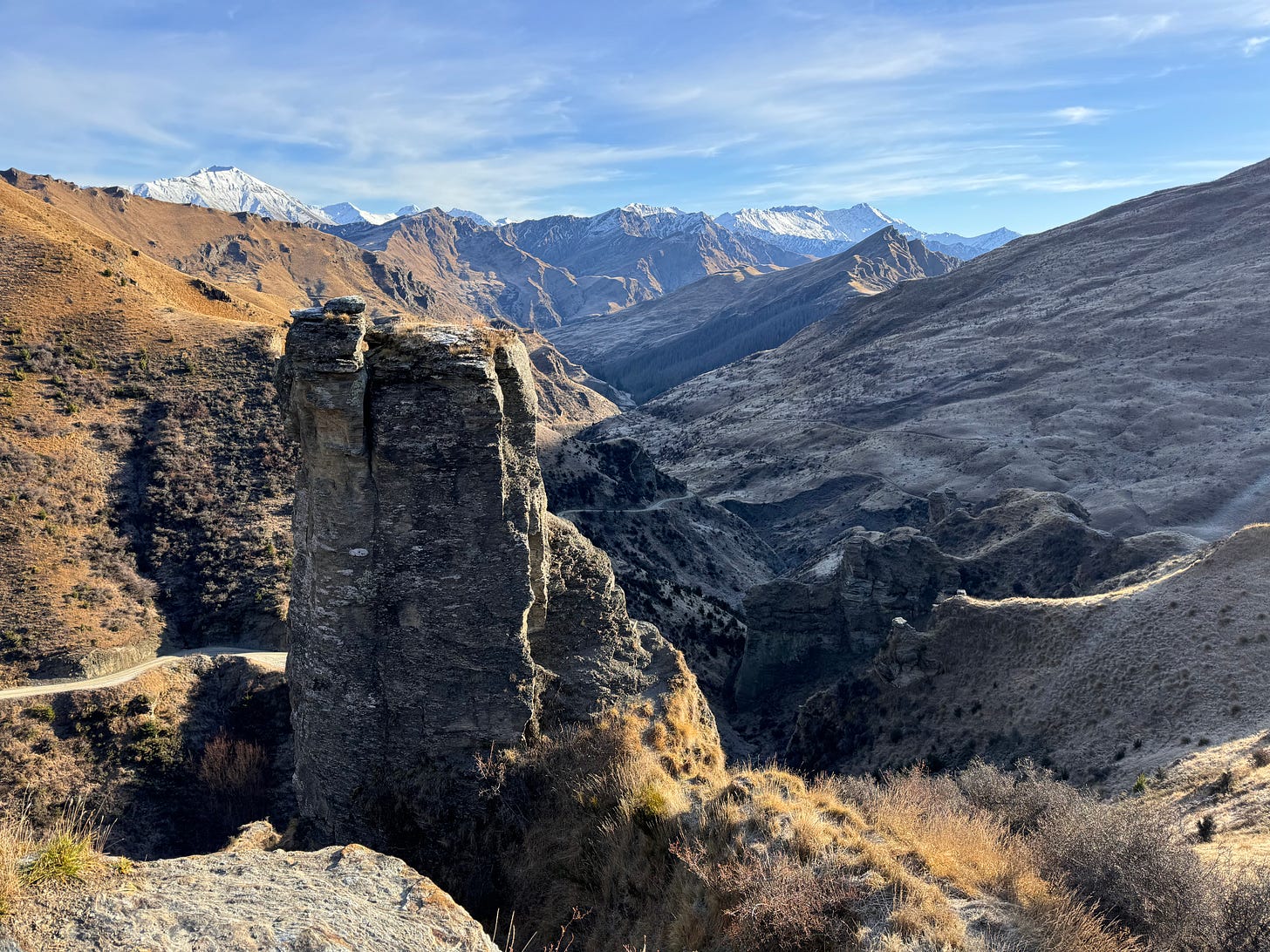Aoteoroa Pine Pollen
(Skippers Canyon, Queenstown - Poisoned pine trees on the far right sloping hill).
The pine tree in New Zealand, a dastardly thing. Pest these days is its main prerogative, initially introduced for its hardiness, rapid growing nature and availability for timber and firewood, it has grown to become one of Aetoroa’s biggest issues for conservation. From acidifying the soil beneath, to completely blocking floor level sunlight in grown areas, it is a dominating plant, leaving whole mountainsides devoid of native life
.
Whilst clean up efforts are underway, with many areas now starting to be regularly sprayed with poison, such as Skippers Canyon, Queenstown, the growth rate and the ease at which seeds spread by wind and rain mean it is an ongoing task just to keep its spread at bay. Whilst debatably adding a degree of beauty to some areas such as Queenstown hill, and blocking the winds that whistle across the valley, one thing that can really get under your nose, literally, is the pine tree pollen.
Letting loose in late winter, over a 2-4 week period, these pollens are about 5 times the size of other tree or grass pollens but have two natural gas bladders that suspend the cells causing fertilisation allowing them to remain light and float in the wind. The pine tree releases these in enormous amounts, creating that yellow stain on the ground, the cars and other surfaces. Sometimes even forming pollen clouds of yellow in the air (imagine flying nimbus from Dragonball…)
As with any inhalation irritant, your lungs have a few things to get rid of it. From a mucosal layer that traps the pollen, preventing its entry further into lung, to cilia (like little hairs), which move in a wave like fashion to remove it upwards and out of your lungs and throat in the phlegm.
In the cell lining of your airways, if it gets through the mucosa (eg in cold dry air like high altitudes), immune cells are capable of ingesting and breaking down the pollen.
Airways can only handle so much of this, and if you are already challenged by winter, the cold dry air has dried out your mucosa, and you drink alcohol (suppresses airways and cilia, suppresses immunity), then chances are your airways may get overloaded with this onslaught. Ensuing headaches, cough, sinus issues with sore and scratchy eyes and throat are all possible. If you’re unlucky this can develop into lung problems and congestive states
.
Over many years, and thousands of hours of listening to my clients and their bodies, I have developed many different ways of hands on treatment for sinus, lung, and throat issues. When an issue like pine pollen is behind the irritation, an approach that harnesses and enhances your bodies natural ability to clear environmental irritants is essential to health. Treating areas that are associated with with this, such as the control centres for blood flow and drainage to the head and neck, the nerves that control breathing, the systems of the brain involved in cleansing and producing cerebrospinal fluid (which circulates from the brain, also passing through the ethmoid plate where pollens can irritate the nasal cavity on the nasal side) are essential.
Fun fact:
Another thing I learnt about pine trees, whilst on a walk for fish and chips one day of all places, was from a man who had built a export business out of two chemicals processed from the pine trees. He said, between the hours of 0100-0300 the pine tree released two chemicals that act on the nervous system and assist in its function. They were release a bit during the day also, but that time was best to harvest due to having the least amount of release of pine tree pollen and greater concentration of the chemicals with a positive effect. The chemical names I’ll have to hunt down the factory owner again to find out, but I have tested the theory by harvesting pine needles in the early hours of the morning to make fermented pine juice and it was a delicious, refreshing brew:)
Now watch this video of pine pollen……!!!!







